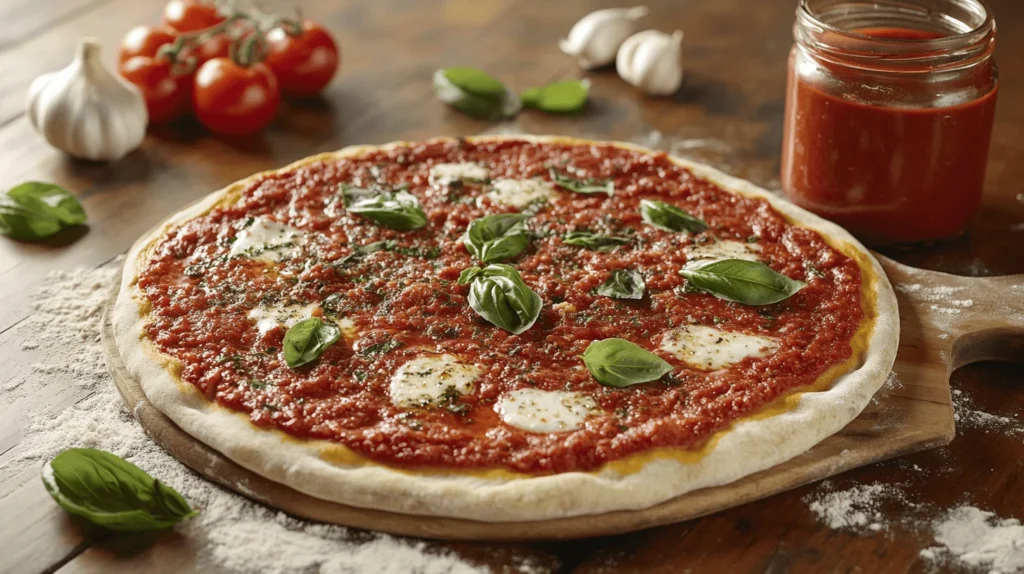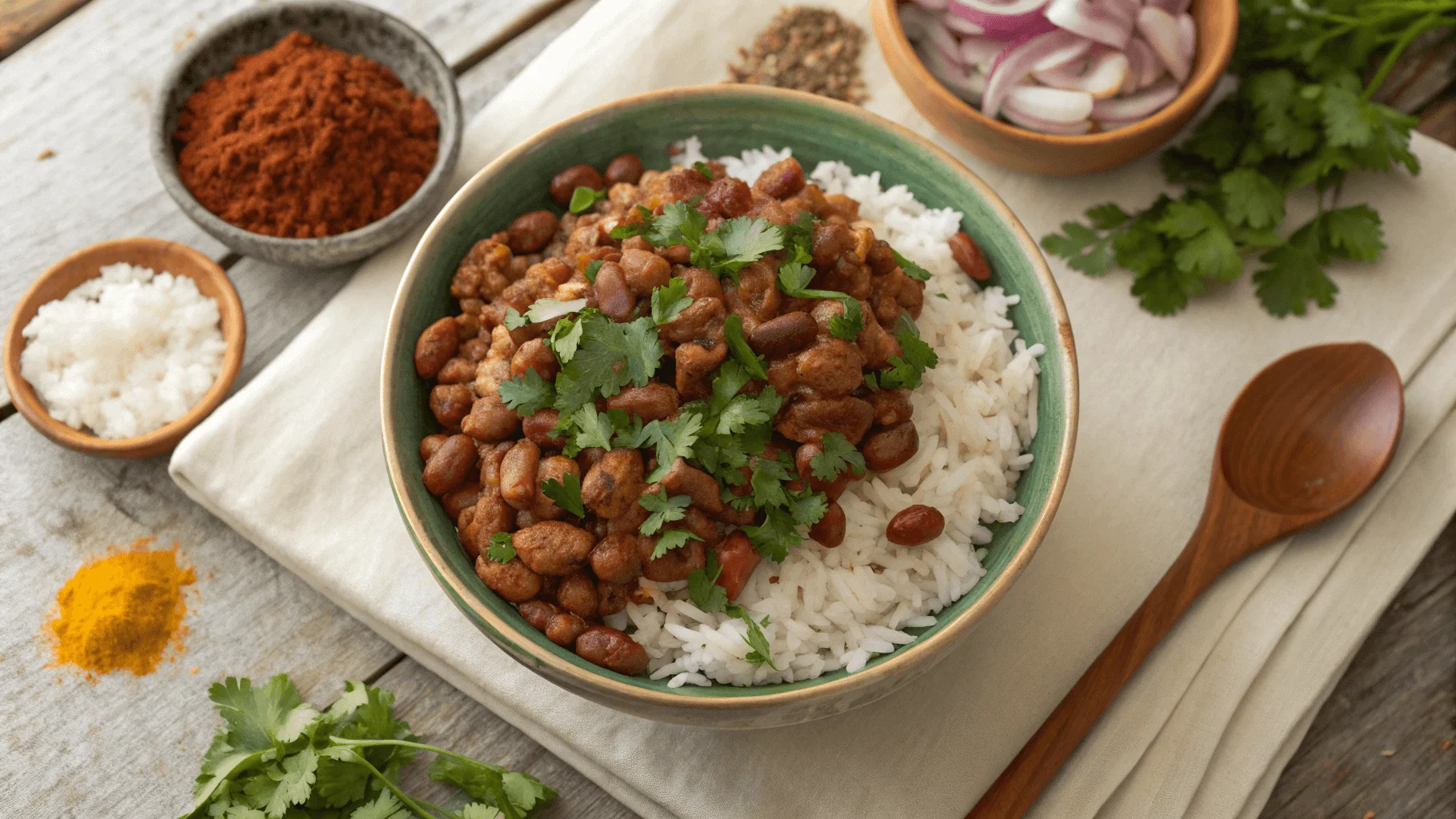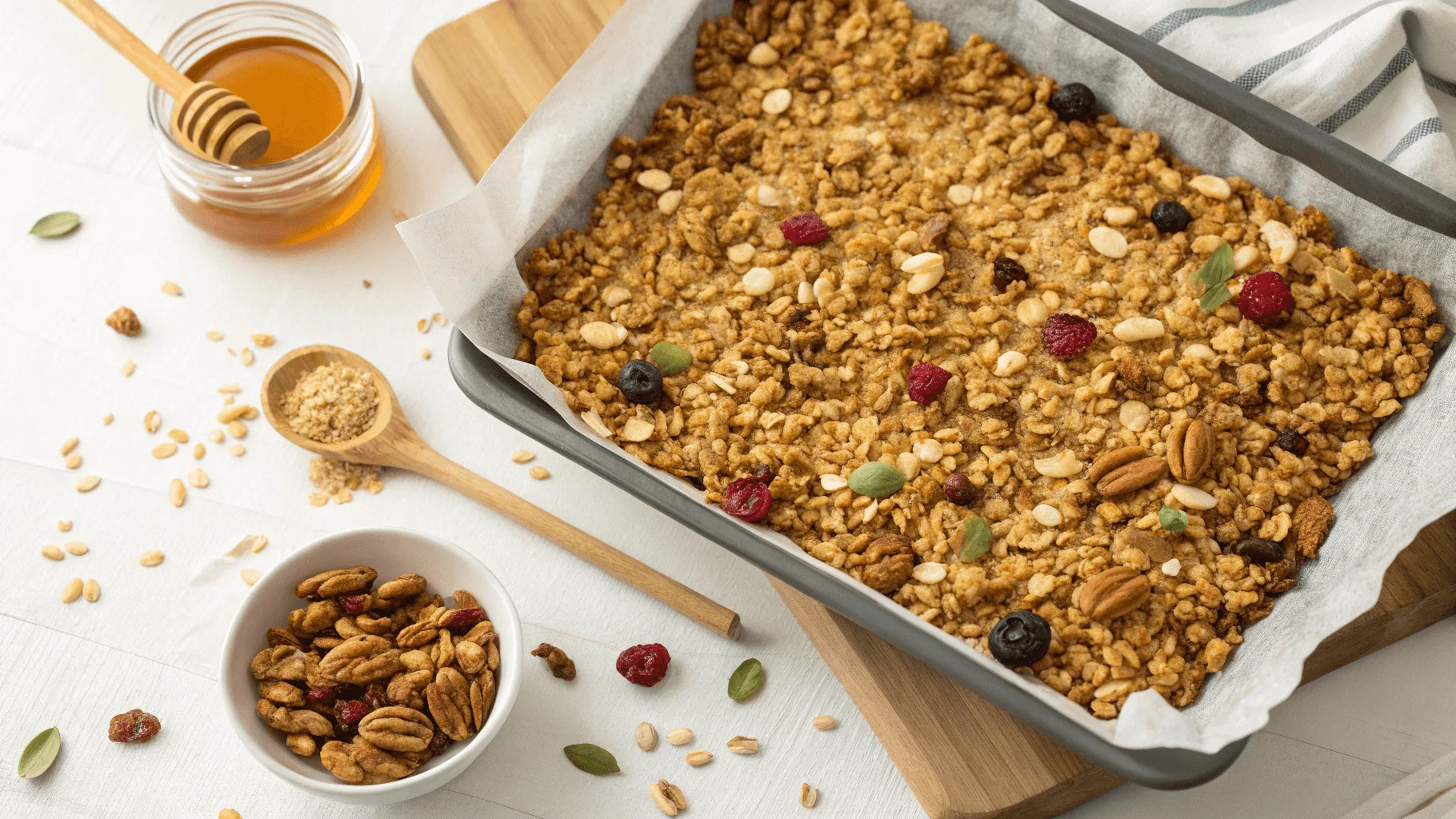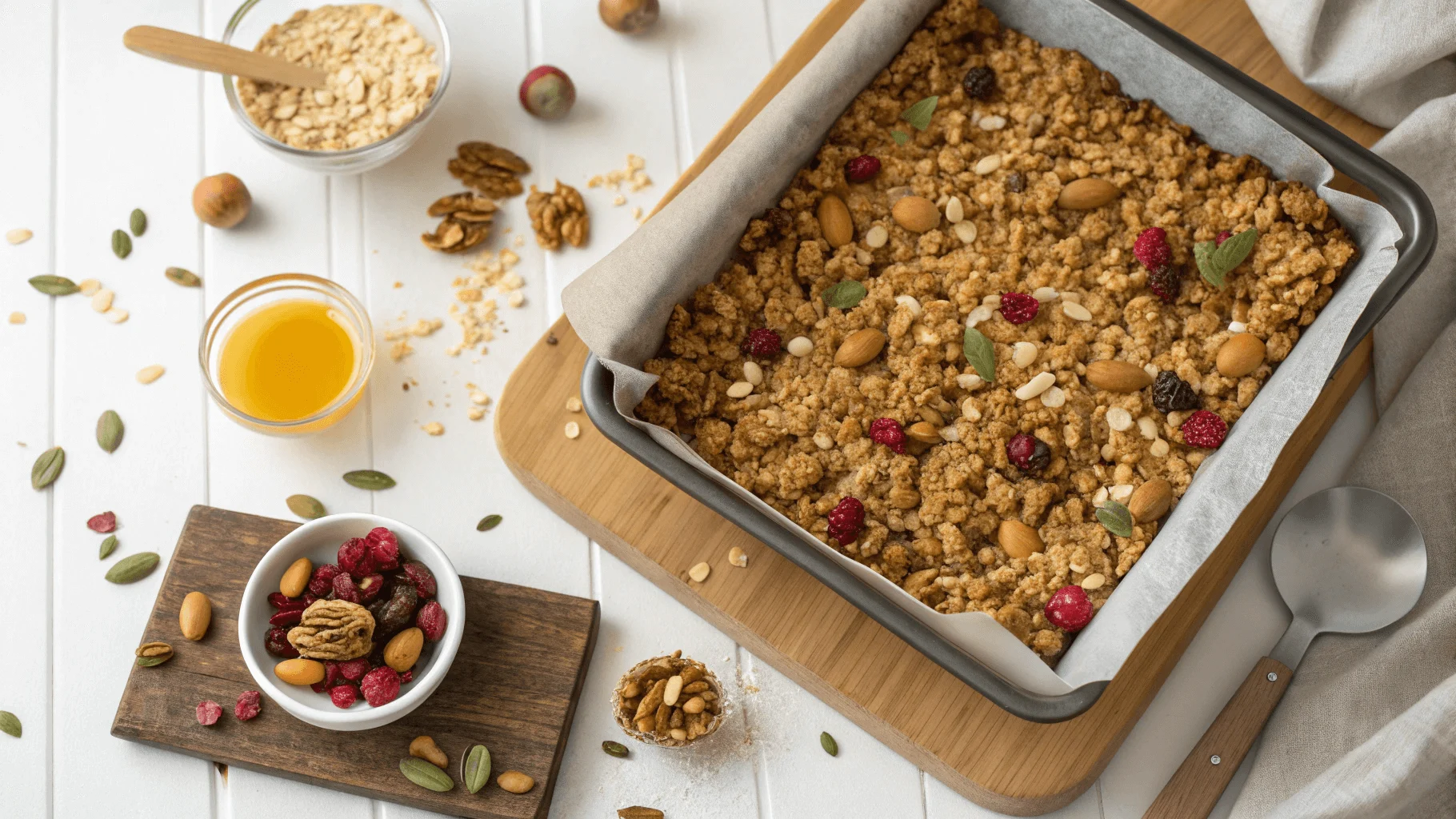Pizza sauce is the heart of any good pizza, setting the tone for every bite. But what if you run out of it or simply want to try something new? Finding a substitute that’s as close as possible can be a culinary adventure. In this article, we’ll explore the intricacies of pizza sauce, dive into similar alternatives, and even uncover creative substitutes for your pizza-making endeavors. Let’s get saucy!
What is Pizza Sauce?
At its core, pizza sauce is a tomato-based marvel that brings bold flavors to every slice. Typically made from crushed or pureed tomatoes, it’s seasoned with a harmonious blend of garlic, oregano, basil, and a pinch of sugar. Unlike marinara sauce, which is often cooked, pizza sauce remains uncooked to preserve its bright, tangy flavor when baked on a pizza.
Key Characteristics of Pizza Sauce
So, what makes pizza sauce unique? Here are the defining traits:
- Flavor profile: Pizza sauce is tangy, slightly sweet, and herby. The balance ensures it complements a variety of toppings without overpowering them.
- Consistency: It’s smoother and thicker than marinara or pasta sauces, designed to cling to the dough without making it soggy.
- Preparation style: Most pizza sauces are uncooked, allowing the oven’s heat to develop the flavors as the pizza bakes.
Why Does It Matter?
The unique texture and taste of pizza sauce are why finding a close match is crucial. Whether you’re looking for a store-bought solution or a homemade fix, understanding these core elements will guide you in selecting the perfect substitute.
Closest Sauces to Pizza Sauce
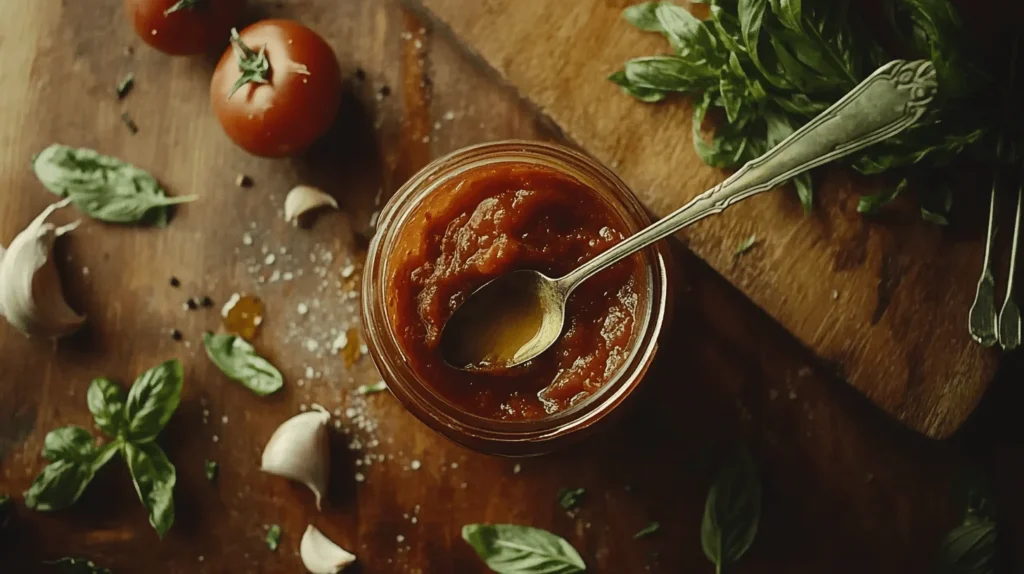
Tomato-Based Sauces
When exploring what sauce is closest to pizza sauce, tomato-based options naturally come to mind. Marinara sauce, for instance, shares many of the same ingredients as pizza sauce, including tomatoes, garlic, and herbs. The key difference lies in texture and preparation—marinara is typically thinner and cooked, which gives it a slightly deeper flavor. With a quick adjustment, such as blending the sauce for smoothness and adding a pinch of sugar, marinara can easily replace pizza sauce.
Pomodoro sauce is another great alternative. Known for its simple yet vibrant flavor, pomodoro sauce is made with fresh tomatoes and a light touch of seasoning. It pairs beautifully with traditional pizza toppings, especially mozzarella and basil. If you’re in a pinch, even a hearty tomato paste diluted with water and seasoned with Italian spices can mimic the essence of pizza sauce.
Non-Tomato Alternatives That Work
But what if tomatoes aren’t your thing? Don’t worry; there are options! Pesto sauce, made from fresh basil, pine nuts, garlic, and Parmesan cheese, creates a rich, aromatic base for white pizzas or gourmet combinations. While it lacks the tang of tomatoes, its bold herbal flavors are a refreshing change.
Alfredo sauce, a creamy blend of butter, cream, and Parmesan cheese, offers a luscious alternative for those who love a white pizza. For adventurous options, barbecue sauce adds a smoky-sweet twist, ideal for specialty pizzas like BBQ chicken.
Store-Bought Pizza Sauce Alternatives
Top Store-Bought Pizza Sauce Brands
For those wondering what sauce is closest to pizza sauce in stores, there are plenty of ready-to-use options. Brands like Rao’s Homemade Pizza Sauce and Classico Traditional Pizza Sauce are consistently praised for their authentic flavor and high-quality ingredients. These sauces often include the perfect blend of tomatoes, herbs, and spices, making them a reliable choice for quick and delicious homemade pizzas.
If you’re looking for something more versatile, try Marinara brands such as Prego or Barilla. While not explicitly labeled as pizza sauces, they can easily step in as substitutes with minor tweaks, like thickening or adding Italian seasoning.
Other Jarred Sauces That Substitute Well
Did you know that even pasta sauces can fill in when you’re out of pizza sauce? Alfredo and vodka sauces, while unconventional, can transform your pizza into a creamy delight. For a tangier twist, try barbecue sauce or salsa as a playful alternative—they’re especially great for specialty pizzas like BBQ chicken or taco-inspired varieties.
Crafting Pizza Sauce Substitutes at Home
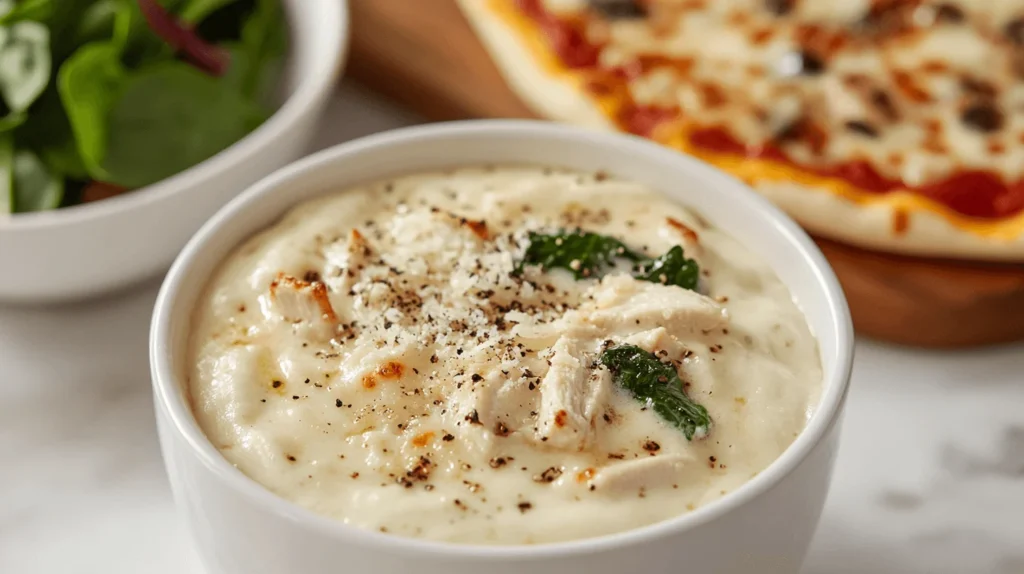
Homemade Marinara as Pizza Sauce
If you’re wondering what sauce is closest to pizza sauce that you can whip up at home, marinara sauce is a fantastic option. Start with fresh or canned tomatoes, and blend them until smooth. Add garlic, olive oil, a pinch of sugar, and Italian herbs like oregano and basil. Simmer this mixture briefly to meld the flavors but keep it light—pizza sauce works best when it’s fresh and vibrant.
For a thicker consistency, reduce the sauce over low heat, or add a tablespoon of tomato paste. This DIY version not only mirrors the essence of pizza sauce but also gives you complete control over the flavor.
Experimenting with Non-Traditional Bases
Creativity knows no bounds when it comes to pizza sauce substitutes. Greek yogurt mixed with herbs can create a tangy, creamy base for lighter pizzas. Barbecue sauce, with its smoky and sweet profile, complements toppings like chicken or bacon beautifully. Even a drizzle of olive oil with minced garlic can serve as a minimalist yet flavorful base for pizzas with fresh vegetable toppings.
Exploring Unique Pizza Sauce Variations
From global takes like za’atar or tahini to modern innovations like chipotle mayo or hummus, these options showcase the endless possibilities beyond classic pizza sauces. Sweet and savory blends can create unforgettable culinary experiences.
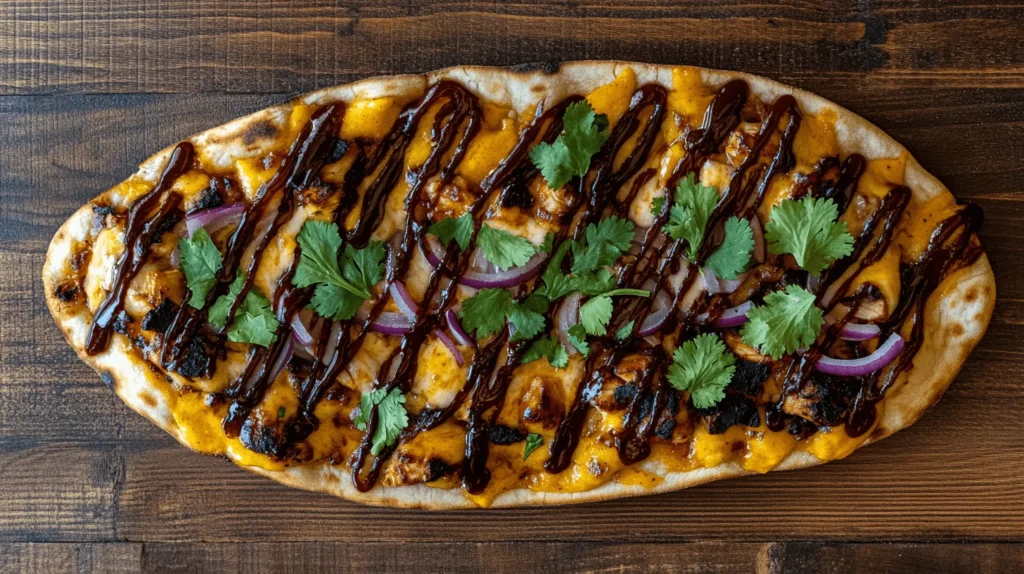
Global Variations of Pizza Sauce
If you’re exploring what sauce is closest to pizza sauce across different cuisines, you’ll find some fascinating variations. Italian pizza sauces focus on simplicity—crushed tomatoes, olive oil, garlic, and herbs. Meanwhile, in the Middle East, you might encounter za’atar spread or tahini as a base for flatbreads that resemble pizza.
In Asia, soy-based or sweet chili sauces are sometimes used for fusion-style pizzas. These sauces are tangy, sweet, and savory, offering a completely different take on the traditional pizza flavor. Each of these sauces brings its own personality, proving there’s no one-size-fits-all rule for pizza bases.
Specialty Sauces for Modern Pizzas
Modern pizzas have broken free from tradition, and so have their sauces. Popular options include chipotle mayo for a smoky kick, garlic butter for a decadent finish, or even hummus for a creamy, nutty layer. These specialty sauces may not be direct replacements for pizza sauce, but they add an exciting twist that’s perfect for experimentation.
Don’t hesitate to try these unique variations—they might just become your new favorite!
Final Thoughts and Recommendations
Why Experimentation Matters
The question what sauce is closest to pizza sauce isn’t just about finding a replacement; it’s about expanding your culinary horizons. By experimenting with different sauces, you’ll discover new combinations that might surprise you. From creamy Alfredo to zesty marinara, each option has its own charm and culinary potential.
Final Sauce Selection Tips
When choosing your sauce, consider the toppings and style of pizza you’re making. Tangy sauces like marinara or pomodoro pair best with classic pizzas, while creamy alternatives like Alfredo are ideal for gourmet creations. If you’re feeling adventurous, go for bold choices like barbecue or chipotle for a burst of flavor.
Remember, the best pizza sauce is the one that complements your personal taste. Whether you’re sticking to tradition or venturing into new territory, there’s no wrong way to enjoy pizza!
For more creative recipes and pizza-making tips, check out our latest articles on crafting unforgettable meals at home.
FAQs
What is the closest sauce to pizza sauce?
When it comes to finding what sauce is closest to pizza sauce, marinara sauce takes the lead. This popular tomato-based sauce shares almost the same ingredients and flavor profile as pizza sauce, including tomatoes, garlic, basil, and oregano. Marinara’s consistency, however, tends to be thinner and slightly more cooked compared to the typically uncooked pizza sauce.
To make marinara sauce even closer to pizza sauce, consider thickening it by simmering it longer or adding tomato paste. You can also blend it for a smoother texture. Adjusting the seasoning by adding extra oregano or a pinch of sugar can help bring it in line with the sweetness and tanginess of pizza sauce. This makes marinara a near-perfect substitute for your pizza-making needs.
Other tomato-based sauces, like pomodoro, are also good contenders. Pomodoro sauce is simpler in preparation, relying on fresh tomatoes and mild seasoning, which can be tailored to mimic pizza sauce closely.
What is the best substitute for pizza sauce?
The best substitute for pizza sauce largely depends on the type of pizza you’re making and your flavor preferences. If you’re looking for a tomato-based alternative, marinara sauce is the obvious choice. For a thicker consistency, tomato paste mixed with olive oil, water, and Italian seasoning can quickly stand in as a reliable replacement.
For non-tomato pizzas, Alfredo sauce offers a creamy, rich base that pairs beautifully with toppings like chicken, spinach, or mushrooms. Pesto, with its vibrant green color and herbal flavor, is another excellent choice for gourmet-style pizzas. Its bold taste complements fresh mozzarella and sliced tomatoes, creating a unique twist on the classic pizza flavor.
If you’re feeling adventurous, barbecue sauce can bring a smoky and sweet profile to your pizza, especially when paired with chicken, onions, and cheddar. Hummus and garlic butter are also innovative options for a more subtle, creamy base.
What other sauces can you use for pizza?
Pizza is incredibly versatile, and the sauce options go far beyond the traditional. Beyond marinara, pomodoro, or tomato paste, you can explore these creative options:
- Barbecue Sauce: Perfect for specialty pizzas like BBQ chicken, offering a sweet, smoky flavor that complements bold toppings.
- Pesto Sauce: Great for white pizzas or vegetarian options, pesto adds a fresh and aromatic touch to your pizza.
- Garlic Butter: Ideal for simple, minimalist pizzas where toppings like fresh herbs and cheeses shine.
- Buffalo Sauce: A spicy, tangy option that pairs beautifully with chicken and ranch dressing.
- Ranch Dressing: Although unconventional, ranch is a creamy and tangy base loved in fusion-style pizzas.
These options show that there are no hard rules when it comes to pizza sauces. The best sauce is often the one that enhances the flavors of your toppings and satisfies your taste.
What is the same as pizza sauce?
Pizza sauce is most similar to marinara sauce, particularly when marinara is uncooked or lightly simmered. Both sauces share a tomato base and are seasoned with staples like garlic, oregano, and basil. However, pizza sauce tends to be thicker to ensure it clings well to the pizza dough without making it soggy during baking.
For a truly authentic pizza sauce experience, start with crushed tomatoes and adjust the seasoning to taste. If you need a quicker option, marinara with slight adjustments can effectively serve as a stand-in. It’s this versatility that makes marinara the go-to option for anyone asking what sauce is closest to pizza sauce.
Conclusion
Key Takeaways on Pizza Sauce Alternatives
Finding the perfect substitute for pizza sauce might seem daunting, but plenty of options can deliver a similar flavor and texture. If you’re asking, what sauce is closest to pizza sauce?, tomato-based alternatives like marinara or pomodoro sauce are your best bet. They share the same tangy, herbaceous notes and can easily be adjusted to mimic pizza sauce’s consistency.
Non-tomato alternatives like pesto and Alfredo sauce bring versatility and creativity to your pizza-making. While they may not replicate traditional pizza sauce, they add unique flavors that can elevate your recipes.
What to Keep in Mind When Choosing a Substitute
When selecting a pizza sauce substitute, consider the flavors and toppings you’re pairing it with. For instance, tangy marinara pairs well with classic mozzarella and pepperoni, while creamy Alfredo is perfect for chicken and spinach combinations. Texture is equally important; a thicker sauce ensures it doesn’t run off the pizza during baking.
The goal is to complement your ingredients without overpowering them. And don’t be afraid to experiment—many of the best pizza flavors come from creative combinations.
For more inspiration and sauce recipes, be sure to check out our guide on crafting unique pizza bases at home!

